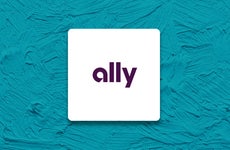What is a high-yield savings account? Definition and what to consider

The Bankrate promise
At Bankrate we strive to help you make smarter financial decisions. While we adhere to strict , this post may contain references to products from our partners. Here's an explanation for .
Our writers and editors used an in-house natural language generation platform to assist with portions of this article, allowing them to focus on adding information that is uniquely helpful. The article was reviewed, fact-checked and edited by our editorial staff prior to publication.
Key takeaways
- A high-yield savings account can offer a significantly higher interest rate compared with a traditional savings account.
- It can be a great way to earn a competitive yield on your savings and build wealth over time.
- It’s important to compare APYs and fees when choosing a high-yield savings account.
- A high-yield savings account issued by a FDIC-insured bank means your money is safe (within federal guidelines), but inflation can still impact its purchasing power over time.
A high-yield savings account is the same as a standard savings account but pays a much higher yield on your money. The national average yield on savings accounts is 0.52 percent. However, you can find high-yield savings accounts that pay over 4 percent — nearly 20 times more than the average.
What is a high-yield savings account?
A high-yield savings account is a savings account that pays a high annual percentage yield (APY). An account’s APY indicates how much interest you earn in one year, taking compounding into account (unlike simple interest). Top-yielding savings accounts are paying upwards of 5 percent.
Why you should consider a high-yield savings account
A savings account is an important part of any financial portfolio, both for having funds for future expenses and to build up your wealth over time. When you’re building your savings, you want that money to earn a competitive yield. Putting your savings in a high-yield savings account will keep your money safe while accumulating interest faster.
What to look for in a high-yield savings account
When you’re comparing high-yield savings accounts, there are two main features to consider: APY and fees.
- Annual percentage yield: APY is the primary reason to open a high-yield savings account, so you want to find the account that pays a high rate of interest. These days, a competitive high-yield savings account pays up to 5 percent or more.
- Fees: Some banks charge monthly fees on their savings accounts. Usually, you can avoid these fees if you meet certain requirements, such as maintaining a minimum balance or making a minimum deposit each month. If possible, look for a high-yield savings account that doesn’t charge monthly fees. If you have to go with an account that charges fees, make sure that you can easily meet the fee waiver requirements each month.
Advantages of a high-yield savings account
- Emergency fund: One of the best ways to use a high-yield savings account is to use it for your emergency fund. If you make regular deposits into a high-yield savings account instead of investing all of your money, you don’t have to worry about a market drop wiping out your savings and pushing back your goal, for example.
- Short-term savings goals: High-yield savings accounts are also a good way to save for short-term goals, such as saving for a vacation or a car. If you want to pay for something in the next few months, you don’t want to put your money into risky investments like stocks. If the market drops, you’ll lose your vacation fund.
- Park your windfall: High-yield savings accounts are also a good place to store windfalls, such as stimulus checks, bonuses or gifts. You can save the windfall in your high-yield savings account until you decide what to do with the money.
- Recession-proof your finances: Economists predict that there’s a 64 percent chance the U.S. will enter a recession in 2023. That means consumers will experience a tighter budget and fewer job prospects — but bolstering your savings by earning a higher rate of return on them can give you a slight advantage and provide you with greater security.
Disadvantages of high-yield savings accounts
- Poor options for long-term goals: Although high-yield savings accounts have high yields compared with standard savings accounts, they don’t pay enough interest to hit long-term savings goals or even keep up with inflation. If you have a long-term goal like retirement and can handle some volatility, investments like stocks or mutual funds are likely to be a better choice.
- May have more stringent requirements: High-yield savings accounts may have tougher requirements than a typical savings account. For example, you might need to have a larger deposit to qualify to open the account at certain banks.
- May be a bit harder to access your money: High-yield savings accounts, when they’re opened at a separate financial institution from your checking account provider, can be a bit more difficult to access. For example, it can take a couple of days to transfer funds to your checking account. Additionally, you’re typically limited to six withdrawals per month from savings accounts.
Examples of top savings accounts
Make sure to shop around to find the best online savings account that’s accessible, pays competitively and meets your needs. Here are some top options.
Ally Bank
Ally is an established online bank that offers a full set of financial services, including banking, lending and investing.
Its savings account pays a competitive interest rate, with no monthly fee and no minimum balance. If you’re thinking about transitioning fully to online banking, Ally is a great option to consider. Bankrate named Ally Bank the best bank of 2022 and 2023.
Live Oak Bank
Live Oak Bank is an online bank that consistently offers some of the best interest rates on the market. There is no minimum balance and no monthly fees for its savings accounts, so anyone can take advantage of its great rates.
Bread Savings
Bread Savings is an online bank that offers a high-yield savings account and CDs. The savings account consistently pays a competitive APY, and there’s no minimum balance required to earn the APY or avoid fees.
High-yield savings account FAQs
-
Like other savings accounts, high-yield savings accounts are protected by the Federal Deposit Insurance Corp. (FDIC), which means you’ll receive up to $250,000 in protection per account holder at the bank if it fails. If your bank, for some reason, can’t return the money you’ve deposited in the high-yield savings account, the FDIC will reimburse you for the loss.
However, your savings can lose purchasing power over time because of inflation. For example, if your high-yield savings account pays 2 percent and the annual inflation rate is 6 percent, your money has lost 4 percent of its purchasing power. The higher the rate on your savings account over inflation, the more purchasing power you have.
-
To open a savings account, you’ll first want to find the right institution for you, whether that’s a traditional bank such as Chase and Bank of America, or an online-only bank such as Ally Bank or Marcus by Goldman Sachs. (Keep in mind online-only banks typically pay higher rates than traditional banks with brick-and-mortar locations.)
After you’ve found the right account for you, just go to the relevant bank’s website and find the link that takes you to the online application. To submit the application, you’ll need information about yourself and some documents, including your social security number and government-issued identification.
Bottom line
A high-yield savings account is a great option for those looking to earn a competitive yield on their savings and build wealth over time. While these accounts offer significantly higher interest rates, it’s important to compare APY and fees when choosing one. Additionally, FDIC protection ensures your money is safe, but be aware of the impact of inflation on your savings’ purchasing power. With top options such as Ally Bank, Live Oak Bank and Bread Savings, it’s easy to find the best high-yield savings account for your needs.
— Bankrate’s René Bennett contributed to an update of this story.
Related Articles



High-yield savings account vs. money market fund: Which is better?
